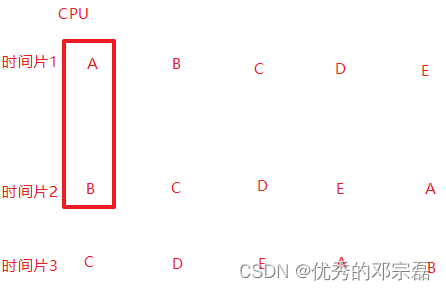操作系统原理,交互式系统常见的调度算法,时间片轮转RR,虚拟轮转VRR,最高优先级调度,优先级反转问题与应对
一、交互式系统中采用的调度算法:
1、时间片轮转调度RR,round robin
2、最高优先级调度HPF,hignest priority first
3、多级反馈队列multiple feedback queue
4、最短进程优先shortest process next
5、指标:响应时间,公平平衡
二、时间片轮转调度算法RR,round Robin
1、将CPU时间划分为时间片,挨个切换进程,用完了自己的时间片的进程排到末尾等待

2、目标:为短任务改善平均响应时间
3、思路:周期性切换,每个进程分配一个时间片,始终中断引发轮换
4、时间片的选择,不能能过长或过短,按照经验选择在10ms-100ms之间
5、优点:公平,有利于交互式计算,响应快,在进程交互时间不同时有利
6、缺点:进程切换较多,开销较大,通常以切换开销约占时间片的1%较为合适;同时平均周转时间会长一些
三、虚拟轮转法virtual RR
1、在时间片轮转算法的基础上,对IO密集型进程多一点思考
2、IO密集型进程对CPU 的使用较少&








 最低0.47元/天 解锁文章
最低0.47元/天 解锁文章















 704
704











 被折叠的 条评论
为什么被折叠?
被折叠的 条评论
为什么被折叠?








